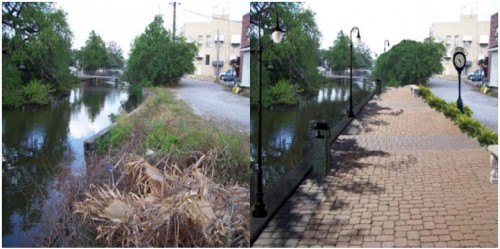November Dance
November 20, 2006
Bayou Walk gets mixed reviews
November 22, 2006The Tri-parish area bayous are bombarded with a green, kudzu-like, long-stemmed grass, which can grow a foot per day, according to local freshwater officials.
It is a key reason why Lafourche Parish is having problems delivering to residents’ water free of pollutants from the Gulf of Mexico’s sea salt, said Archie Chaisson, executive director of the Bayou Lafourche Fresh Water District.
Every day this past week, two aquatic vegetation harvesters have maneuvered up and down Bayou Lafourche, north of Thibodaux, gathering stalks of the non-native plant. As it overruns the upper reaches of the bayou, the fresh water executive said the foreign seaweed-like plant is called “hydrilla,” also known as aquarium grass.
“The bayou has been taken over with patches of the grass between Labadieville and Thibodaux,” he said. “It has become so thick that it intertwined itself and made a barrier to the water flow.”
Under ideal weather conditions, Chaisson said in the beginning of the summer the hydrilla started sprouting like crazy. The freshwater district spokesman said that the bayous were not muddy enough to keep the plant growth contained.
“There was a lack of rainfall, and the bayou’s flow was not heavy. This stuff acts as a filter for the water; it clarifies it to an extent,” he said. “There’s been plenty of sun and clear water, and this stuff can grow up to a foot a day n it is that intense.”
Making it first appearance into the environment during the early 1950s and late 1960s, Chaisson said there is no natural enemies for the hydrilla in this area making it grow almost uncontrollably.
“The vegetation soaks up fresh water like a sponge, leaving less of it to travel downstream,” he said. “In the past six to eight months, hydrilla has reestablished itself in Bayou Lafourche.”
Chaisson said he could use at least two or three more removal machines to speed up the clearing process, which is very slow and tedious. In permitting weather, the machine workers can clear more than 150 yards daily, which he said is not that much.
“One hundred percent of our time and efforts is going into this project,” he said. “At this present moment, I can’t put a dollar figure on it. With the men working since the summer it’s going to put the money value way up there. But, this is part of our budget, we are responsible for channel maintenance.”
Chaisson doesn’t know where this project will end, but he is hoping to get a handle on the situation soon.
He said the only way this problem will go away is if Louisiana experience cooler or wetter temperatures in the areas.







